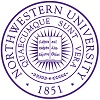专业详情
Although emphasis is on horticultural plants and systems commonly found in areas of temperate climate, graduate study on species and cropping systems of tropical areas is also possible by use of our extensive greenhouse and growth chamber facilities, and through conduct of thesis research in tropical areas.
Members of the graduate field of horticulture reside in the Section of Horticulture on the Ithaca campus, and at the New York State Agricultural Experiment Station in Geneva. In addition, some faculty members of other sections such as Plant Biology, Plant Breeding, Soil and Crop Science, etc., may also be members of the graduate field of horticulture.
Minor fields of study may be selected from such areas as plant physiology, pathology, anatomy, or ecology; biochemistry; botany; entomology; taxonomy; genetics; education; soils; agricultural, resource, and managerial economics; communication; agricultural and biological engineering; and landscape architecture.
All students receive experience in academic education and Cooperative Extension programs.
Research facilities.
At the Ithaca campus, research facilities include laboratories equipped for studies of all aspects of plant physiology, including photosynthesis, pre- and postharvest physiology, biochemistry, biotechnology, photobiology, analysis for chemical elements, and tissue culture. Extensive greenhouse and growth chamber facilities permit varying degrees of plant environmental control. Facilities for postharvest research include rooms for refrigerated and controlled atmosphere storage. Field facilities include two research orchards for study of fruit crops, two vegetable research farms, an outdoor nursery, turfgrass research areas, and the Cornell Botanic Gardens, an extensive botanical garden. At the Agricultural Experiment Station in Geneva, laboratories, greenhouses and growth chamber facilities similar to those in Ithaca are found. In addition, 600 acres of orchards and 200 acres of vegetable experimental farmland are available for research purposes. A wide range of apple, grape, and vegetable germplasm is maintained by the USDA Plant Introduction Station, the National Clonal Repository and the fruit and vegetable breeders. Research is also conducted at the Hudson Valley Lab (fruit research), the Long Island Horticultural Research and Extension Center (grape and vegetable research), and the Fredonia Grape Research Station.


